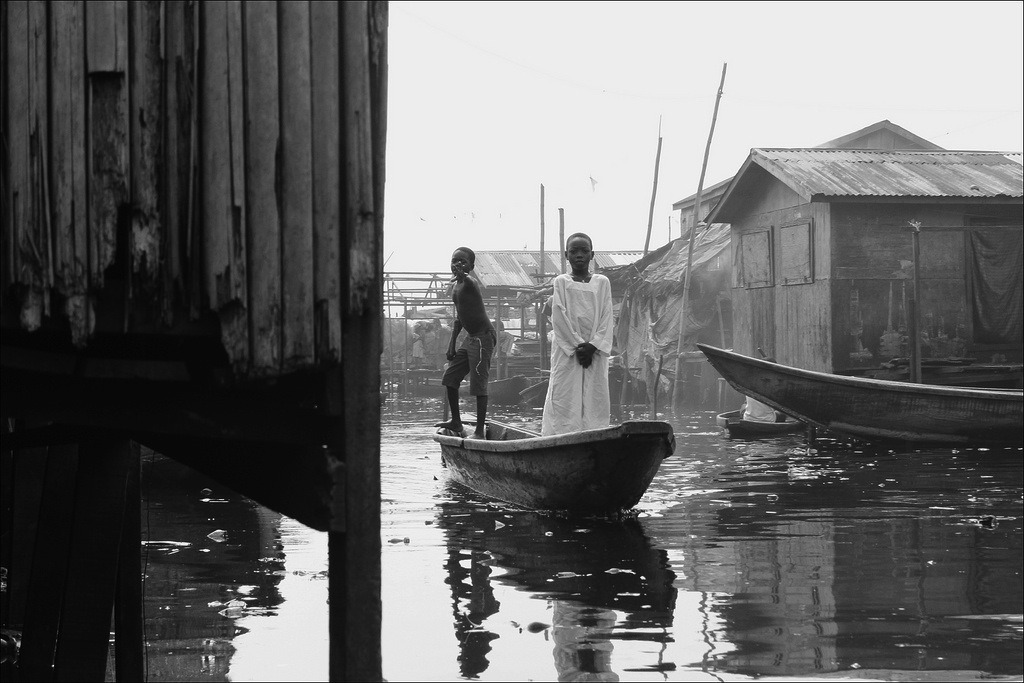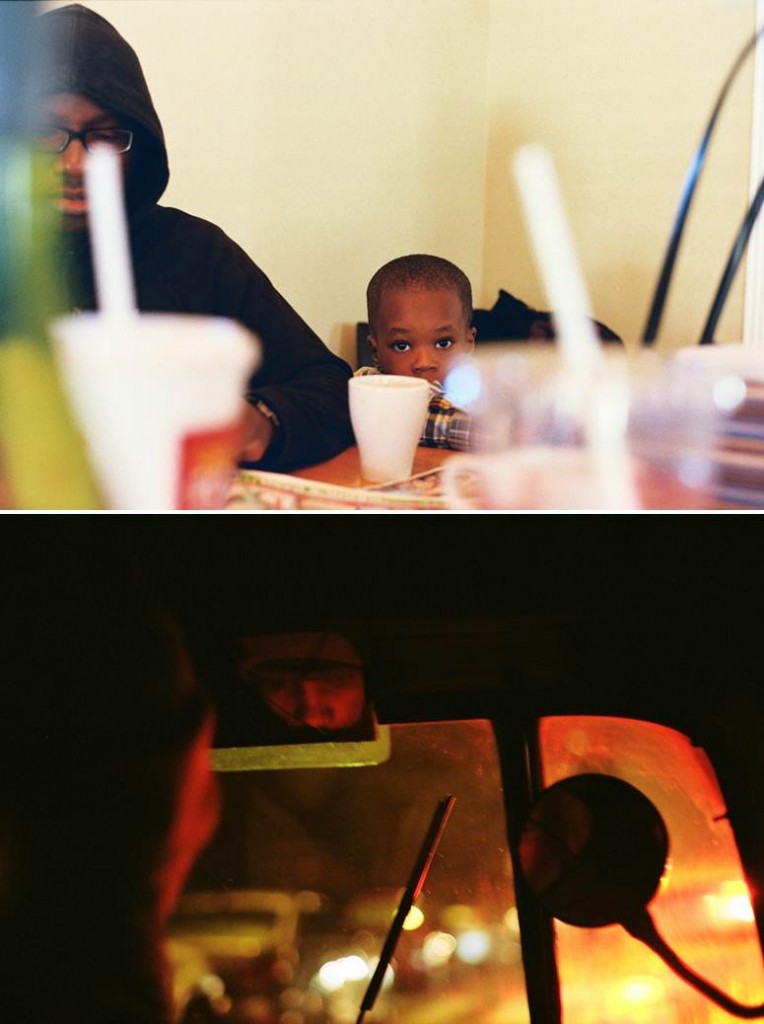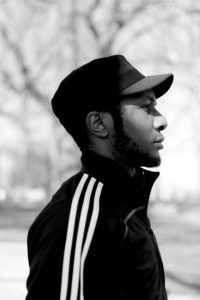
“On an afternoon of heavy rain when gingko leaves were piled ankle-deep across the sidewalk looking like thousands of little yellow creatures freshly fallen from the sky, I went out walking.”
-Teju Cole, “Open City”
It is impossible to separate Teju Cole the photographer from Teju Cole the writer. As a writer, Cole penned “Open City,” a novel published last January that garnered a nomination for The National Book Critics Circle for Best Fiction and won the 2012 Hemingway Foundation/PEN Award for a distinguished first book of fiction. Cole’s renown also extends to the medium of Twitter, where his project, “Small Fates,” concluded in January 2013.
This ability to seize his world and distill its essence on paper translates well to Cole’s competing interest in photography. His upcoming exhibition of photographs at Ithaca College, “Who’s Got the Address?” featuring writing by Indian-American writer and journalist Amitava Kumar of Vassar College was first shown in Goa in December 2012 and features a series of paired photographs from locations around the world, including Jaipur and New Delhi. I reached out to him via email to learn more about his process.
How did you get into photography? What was your first camera? Your first subjects?
In 2003—doesn’t seem long ago, but it’s already ten years—I began to use a 3 megapixel Canon. These were my first photos that were intentionally “artistic.” I mean, I began to respond properly to light for the first time, and to think about unusual perspectives. Because some friends said nice things about the results, things like “you have a nice eye,” (we are so helpless before even a little bit of flattery) I persisted with it and soon became obsessed.
I was doing street photography right from the beginning, in the US, in Nigeria, and in India, and I soon began to wish for a smarter and more responsive camera. In 2006, I think it was, I got my first digital SLR, also a Canon. Three years later, I began to shoot film seriously with a Pentax, a Contax, and a Hasselblad.
The element of surprise is key. You head out of your house not knowing what you’re going to encounter. After a while, you see the lyricism inherent in the world. To capture this takes tremendous amounts of luck.
But it also takes preparation, and my preparation has been in the form of studying closely what the great street photographers achieved: Cartier-Bresson, Levitt, Frank, Friedlander, as well as contemporary masters of color like Harvey, Webb, and Pinkhassov.
Looking at great photographs is a pleasure and, at least in a minority of the lookers, it generates an irrepressible urge to try to create great photographs. Mostly you fail, but on some days, the god of photography smiles on you.
How does photography influence your writing and vice versa?
Photography reminds my writing to describe the visible world in detail. I think a strong visual bias is present in all my writing. But, in the other direction, writing pulls my photography towards fragmentary anecdote.
I’ve come to believe that both practices are expressions of the same instinct: both are my way of aspiring to lyric poetry. What Seferis or Tranströmer do to me as a reader—their way of eliciting that small inadvertent gasp of recognition—is what I would like to do to those who read my books or see my photographs.
Nowadays, everyone seems to have Instagram or such on their smartphone. You’ve written about that phenomena for The New Inquiry. What do you shoot with when you’re roaming about a city?
These days, I shoot with whatever’s at hand—that’s sometimes my iPhone—but I still tend to like my color film photographs best.
You provide a running narrative of the thought-process behind your photography through Twitter, @_firescript. Recently, you tweeted, “Looking for the ouch in photography.” Elaborate.
[pullquote]A good photograph is like a pinprick. It draws blood, it quickens, it’s uncomfortable, and it reminds you in a small sharp way that you’re alive right now.[/pullquote] A good photograph is like a pinprick. It draws blood, it quickens, it’s uncomfortable, and it reminds you in a small sharp way that you’re alive right now. We are utterly surrounded by photographic imagery these days, from advertising to the thousands of amateur photographers on Facebook. Within this swirl of visual noise, it’s interesting to try to create images that are a momentary shock to the consciousness or a sudden rush of blood to the head.
Tell us about the process of forming this exhibition.
I selected fifteen pairs of images from the archives I have built up over the past eight years. That’s an archive of some seventy thousand photographs. I did the selection over several months last year. There’s an Igbo proverb that Achebe is fond of quoting: “Where one thing stands, another will stand by it.” That served as an organizational principle for this exhibition: the idea that each image is connected in some mysterious way to another image taken in another place at another time. I had to sort through the countless useless shots to find the ones that had analogues.
I like the idea that these photographs are being reunited with their mystical doubles. The search to match them up accords with the title of the exhibition: “Who’s Got the Address?” But that title also hints at the fact that a certain lostness characterizes my images. The line comes from a poem of Tranströmer’s: “Nicodemus the sleepwalker is on his way / to the Address. Who’s got the Address? / Don’t know. But that’s where we’re going.”

You’ve teamed up with one of your mentors, Amitava Kumar for “Who’s Got the Address?” He provides an essay-like caption that accompanies each photo. Why did you decide to distance yourself from the captioning process?
Because I thought another writer, especially a writer whose habits of looking I deeply respect, would be more illuminating about these images. And that turned out to be right: Amitava wrote about my photographs in a way that both modesty and a lack of imagination would have prevented me from doing. Through his words, I learned more about what I was doing, but also about what I ought to be doing.
You’ve taken many photos in India, most recently in Goa. You’ve written that when taking photographs, you are “interested in catching or in being caught by the unexpected.” What about India were you able to capture that was unexpected?
Yes, I’ve shot in Goa, Cochin, Bombay, Jaipur, and Delhi. It’s hard to say why India is a more congenial photographing environment for me than, say, Nigeria (which I find very difficult to shoot in). I think in part it’s because I look so unusual in an Indian context—there are few other Africans around—that I can just get on with my work.
I can play the dumb tourist. In Nigeria, I always have to be more vigilant, since there skin color does not mark me out as a harmless foreigner. I’m a Nigerian with a camera. Am I part of the security service? Am I here for surveillance or theft? This makes photography there a more tense affair, and tension is no help in an art that thrives on spontaneity and physical grace. And yet, on the rare lucky days, I arrive at photographs that lift the heart, photographs that could only have been taken in Nigeria.
“Who’s Got the Address?” opens with a public reading by Teju Cole on Thursday, April 11, at 6 p.m. in The Handwerker Gallery, Caroline Werner Gannett Center. The exhibit will be showing at Ithaca College through the month of April.













